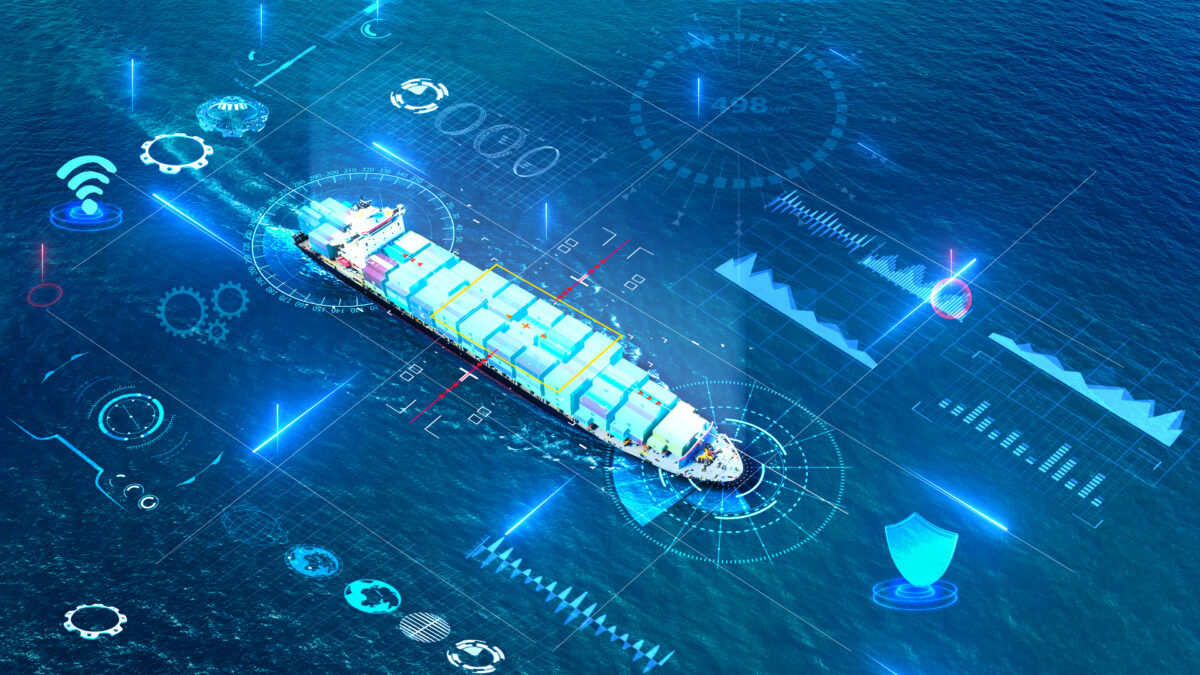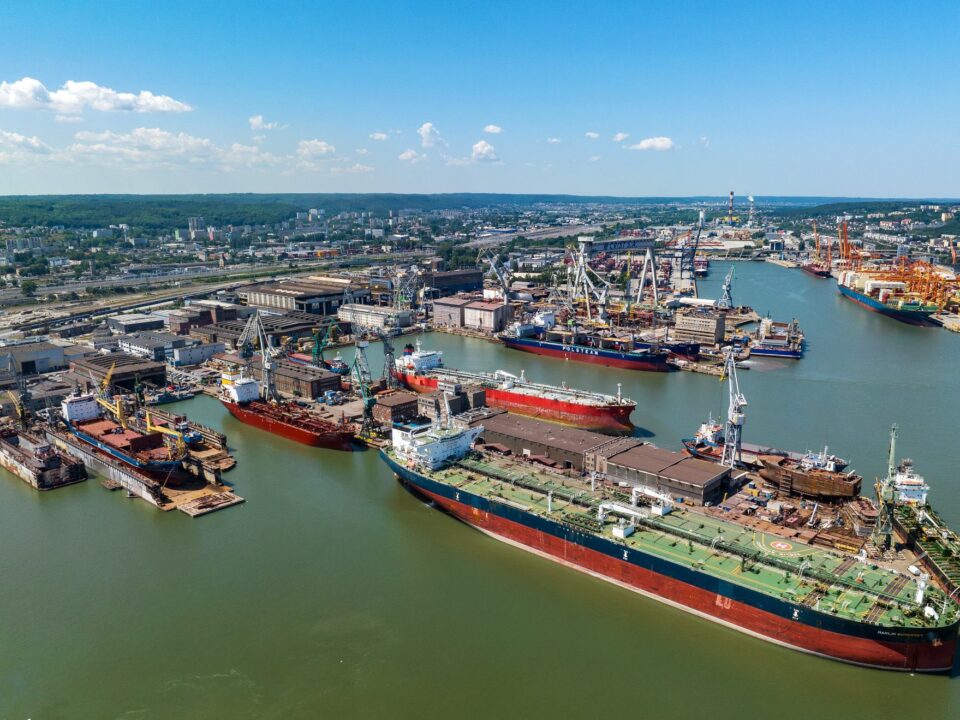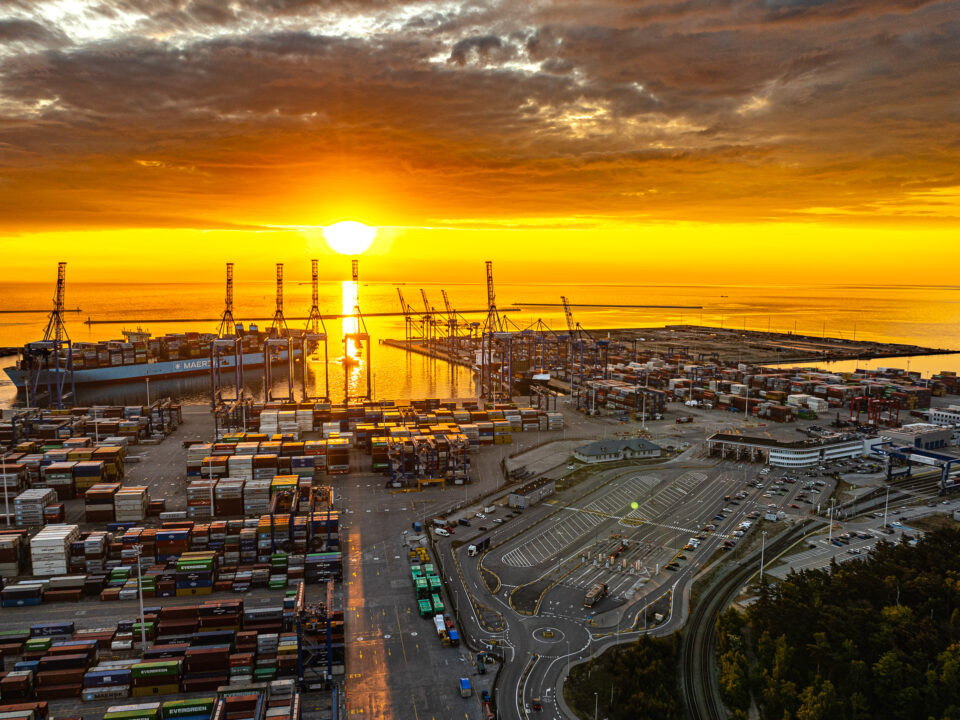
Decarbonization of the global shipping by IMO – time for decisions!
17 September 2025AI tools are gaining prominence in maritime logistics, although due to security concerns they are mainly used for simpler tasks for now. Nevertheless, even within this limited scope, their effectiveness translates into tangible benefits and significant profits for companies.
Artificial intelligence is showing a wide range of applications in optimizing cargo handling operations at container terminals. By analyzing data on ship call schedules, cargo weights and their destinations, AI systems streamline loading and unloading sequences. This makes it possible to monitor cargo movement in real time, optimizing operation time and minimizing the risk of human error. In the area of storage yard management, AI contributes to the reduction of unnecessary container handling, increasing the efficiency and utilization rate of storage space. AI predictive algorithms, on the other hand, are able to forecast container movements, enabling advanced storage layout planning.
AI also supports the automation of quay cranes and autonomous ground vehicles (AGVs), increasing productivity and reducing turnaround times. Optimizing the trajectory of vehicle traffic within the terminal contributes to reducing congestion and lowering operating costs. Predictive maintenance, based on advanced analysis of sensor data, allows early detection of signs of equipment wear and tear, preventing breakdowns and unplanned downtime. This translates into increased reliability and a longer life cycle for port equipment.
Artificial intelligence also improves security by automatically detecting potential threats and anomalies. Intelligent surveillance systems, using AI algorithms, assist operators and improve control over overall terminal operations. Implementation examples from the ports of Rotterdam and Singapore illustrate the tangible benefits of AI – from digital twins and autonomous transportation systems to optimizing infrastructure and reducing redundant handling operations. As the implementation at one terminal showed, reducing transshipments by just 1% on a scale of 1 million TEUs resulted in annual savings of €800,000.
The implementation of AI in container terminals goes beyond simple automation, representing advanced integration of data from multiple sources to holistically optimize complex and interrelated processes. In this way, improvements in one area, such as optimizing the allocation of parking spaces, generate positive effects in other areas, such as the workflow of overhead cranes. The concept of smart ports, integrating AI, Internet of Things (IoT), 5G networks and digital twins, transforms terminals into self-regulating systems capable of adaptation, increased efficiency and sustainability.
Artificial intelligence is increasingly boldly supporting operations in sea freight forwarding, especially in the field of route planning and optimization. It analyzes weather data, traffic volume, sea currents, port situations, or even geopolitical situations at loading/unloading ports to determine the most efficient transportation routes. The result is fuel savings, reduced emissions and shorter shipping times. Importantly, routes can be dynamically adjusted in response to ongoing changes at sea.
AI is also significantly impacting supply chain visibility – enabling real-time cargo tracking by integrating data from IoT sensors, GPS systems and blockchain technology. This allows to respond more quickly to delays, improve timeliness and enhance the quality of service. An example is Windward’s Ocean Freight Visibility solution, which provides full transparency of global logistics operations.
In the area of operational planning, AI analyzes historical data, market trends and economic indicators, which translates into more accurate forecasting of demand for transportation services. This allows companies to better allocate cargo space and fleet, avoiding both shortages and excesses. Artificial intelligence also supports the pricing strategy – based on market data and simulations, it helps predict changes in freight rates, enabling better management of profitability and risk. It also automates routine documentation processes – such as customs clearance and mail processing. With solutions based on natural language processing and chatbots, communication with customers is faster and more efficient.
Ship owners, too, are increasingly turning to artificial intelligence to improve operational efficiency and safety. One application is predictive condition monitoring of ships. The systems collect data from sensors (e.g., temperature, pressure, vibration), analyze it in real time and identify signs of potential faults even before a failure occurs. Artificial intelligence also improves route planning. Using weather, oceanographic and port data, AI determines the most economical routes that minimize fuel consumption and reduce cruise time. Importantly, these systems are dynamic – they can modify the route in response to changing conditions.
With the help of AI, shipowners can also intelligently manage their fleets and personnel. The systems optimize crew schedules, keep an eye on certification deadlines, analyze the performance of individual vessels and support ship deployment decisions. On the bridge, AI has an advisory role – analyzing data from radar, AIS and weather systems, warning of threats and recommending optimal maneuvers.
In the context of tightening environmental regulations, AI is becoming a tool for monitoring emissions and optimizing fuel consumption. It supports regulatory compliance, such as IMO 2023 and future decarbonization goals (IMO 2050), while helping to reduce operating costs.
Security issues – both of the data and the infrastructure itself – are also important. AI systems operate on huge volumes of operational data, often sensitive from a business and government security perspective. Increasing connectivity, automation of decisions and dependence on external systems are making maritime logistics increasingly vulnerable to cyberattacks. Even more potential lies in future technologies. Integrating AI with the Internet of Things (IoT) and 5G networks opens up new opportunities for ports and fleets.
The article was written in collaboration with Namiary Na Morze i Handel – a biweekly magazine providing expert information on the most important events and issues in the Polish maritime economy.





